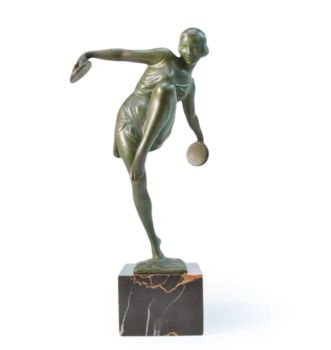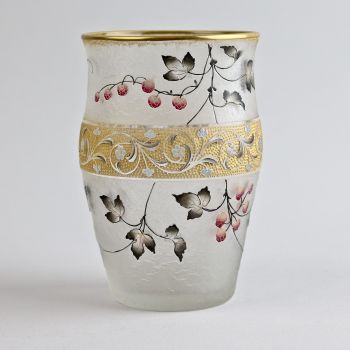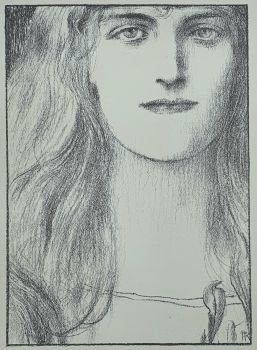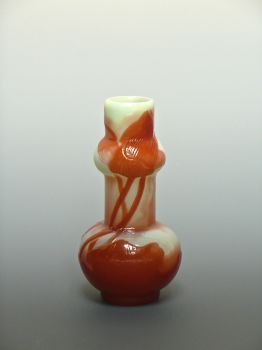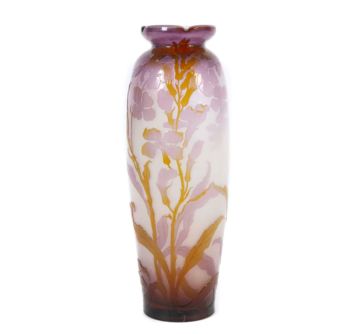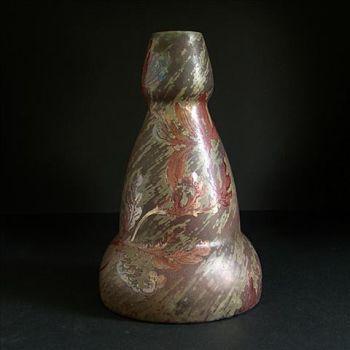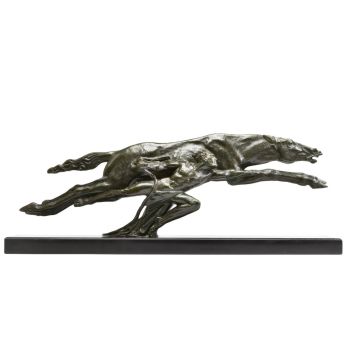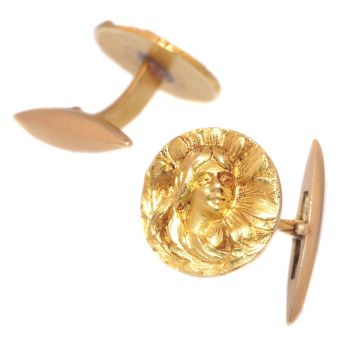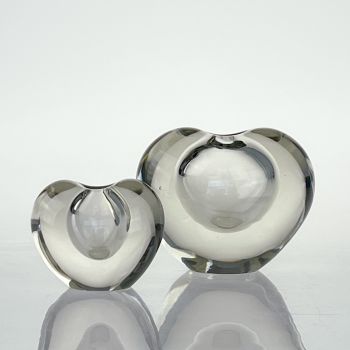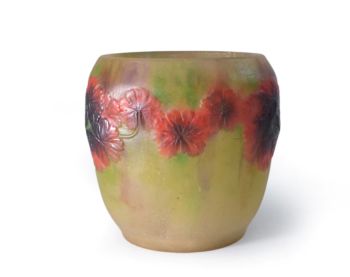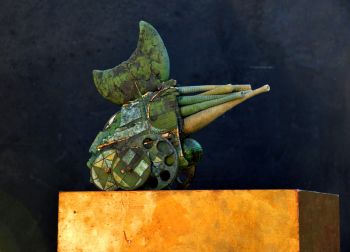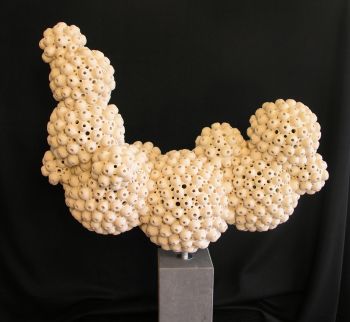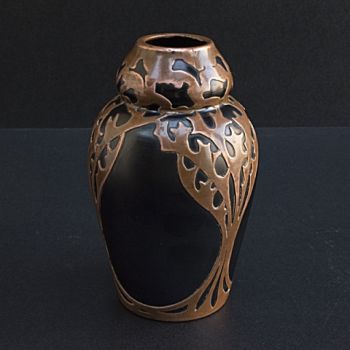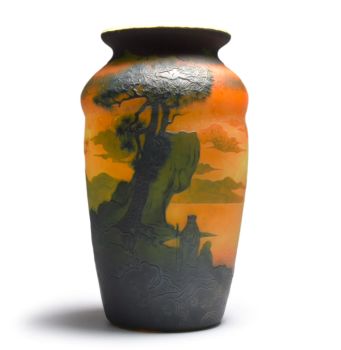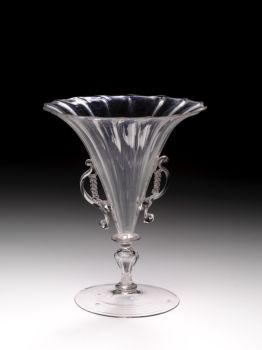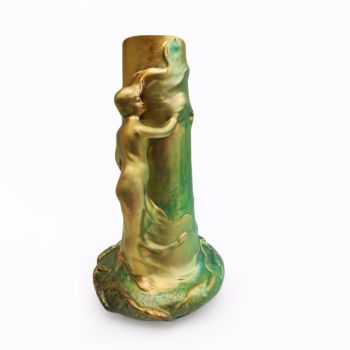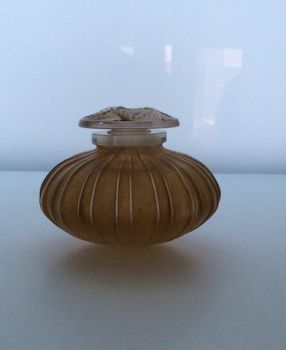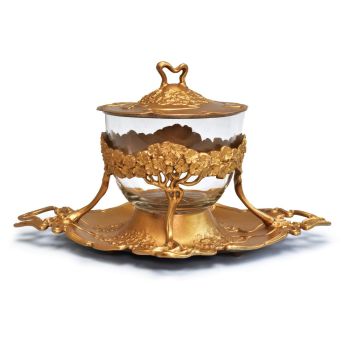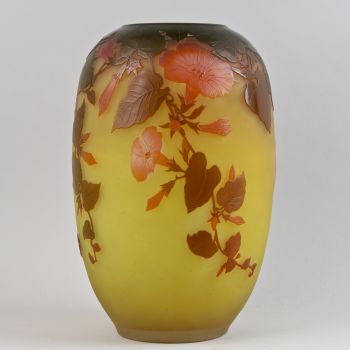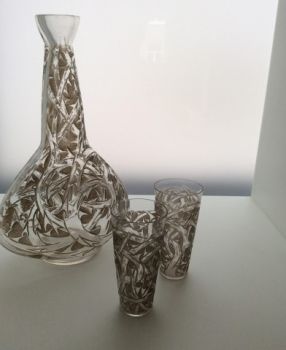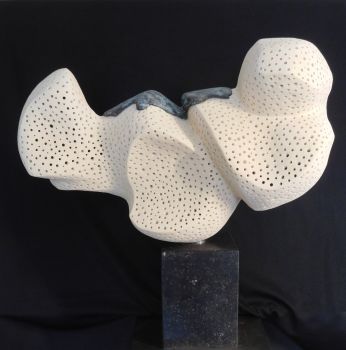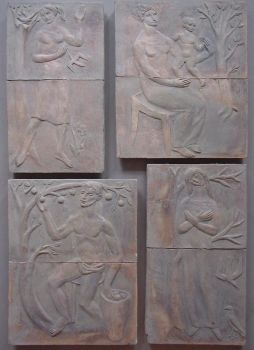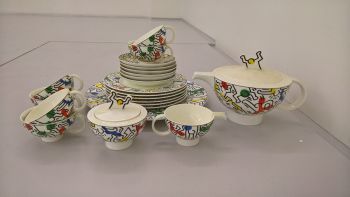About the artist
The Pallme glassworks was first established in Steinschonau, Austria, in approximately 1786 by Ignaz Pallme-Konig. In the 1880s and 1890s the firm of Pallme-Konig was making and exporting high quality engraved glass and chandeliers. Around the turn of the century they merged with Wilhelm Habel's Elizabethhutte glassworks near Teplitz and became known as "Glasfabrik Elisabeth, Pallme-Konig and Habel".
During the Art Nouveau period, this glass company produced high quality iridized glass, and its finest production was the type illustrated on the left. Hot glass trails were wound around the iridized glass forming a network, and the piece was then blown into a mold so that the trails were pressed into the glass.
The output from the Elizabethhutte was, and still is, very highly regarded in Austria. Production of this beautiful, highly specialised type of design continued until the early 1920's. Pallme-Konig vases often have cuts at the top and pieces folded down in a way which emphasis the once-molten nature of the glass.
There were several factories with the Pallme-Konig name and many of them continued to produce glass until the industry was nationalised after the end of the War in Europe (1945). Pallme-Konig and Habel glass is not usually signed, and does not normally have a pontil mark. The whole vase, with its molten trails on the surface, was normally blown into a mold and then finished from the top.
Pallme Konig and Habel glass is often confused with Loetz glass, the major Austrian glass maker of the Art Nouveau period. Loetz also made iridized glass vases and bowls with trails of glass around the outside. Very often these kinds of Loetz trails are finer, and are not necessarily in a contrasting color to the vase itself. Loetz also made glass with trails that have been flattened and smoothed to the surface of the vase, again distinctly different from Pallme Konig and Habel. Similar types of glass were made by other Austrian glassworks at that time.



